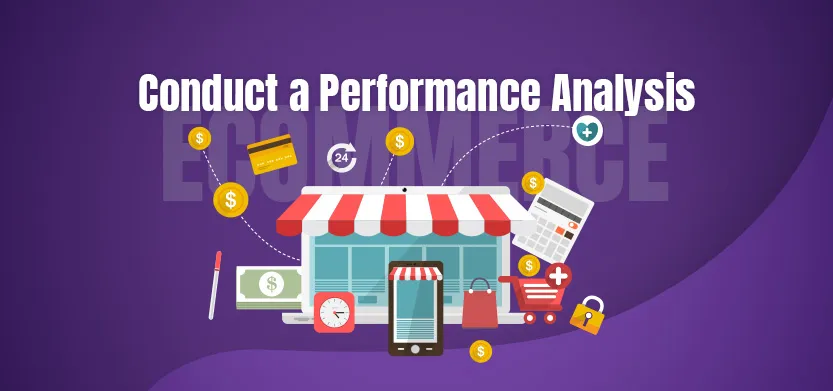
Posted in Digital Commerce, Software & Development
September 24, 2020
How to conduct a performance analysis of your ecommerce site
Did your ecommerce site experience a dip in web traffic or conversion rates recently? Have your website performance metrics dropped? If so, you could use a performance analysis. This will help to determine where you may need to make changes or even invest in a platform update to ensure your site is ready to grow with you.
How to conduct a performance analysis of your ecomm website:
- Analyze speed optimization and SSL — Speed optimization, site security and a mobile-friendly experience remain top of the list of factors that affect your ecommerce site’s SEO.
- Analyze and modify call-to-action elements — A performance analysis of your CTAs can reveal where you might lose customers so you can take steps to fix it.
- Analyze your site’s personalization features — Does your site use personalized marketing to deliver the recommendations customers need when they are ready to buy?
- Work with an experienced agency — Who better than the pros to get you on track and make sure that you are fully optimized for conversions?
In order to reap the benefits of performance analysis, it’s important to understand what may be negatively impacting the speed and responsiveness of your site. In May 2020, Google introduced the latest major algorithm update which may have affected web traffic, especially on ecommerce websites. On the other hand, on-site performance might also be related to speed optimization and SSL on your website. Identifying the broken facets of your ecommerce sales funnel presents a challenge for even the savviest of webmasters
Here, we break down steps to conduct an ecommerce performance analysis, and how it can help take your online business to the next level.
Analyze speed optimization and SSL on websites
Speed optimization, site security and a mobile-friendly experience remain top of the list of factors that affect your ecommerce site’s SEO. Various free apps exist to analyze your website’s page load speed; your site’s security elements; and how mobile-friendly your site is.
Website speed
Google recommends that pages load in less than three seconds. One study discovered that the average page load speed sits at 4.7 seconds on desktop and 11.4 seconds on mobile. These numbers can significantly hurt ecommerce sites.
According to MachMetrics, when your site speed goes from one second to three seconds, the bounce rate increases by 32 percent; slower page load times increase the bounce rate tremendously. If your page takes five seconds to load, your bounce rate could balloon up to 90 percent. Choosing the right ecommerce platform can dramatically improve speed optimization and, as a result, lower bounce rates and increase conversions.
If your site isn’t mobile-friendly, a revamp may also be necessary. Google continues to penalize sites that fail to load quickly and seamlessly. But today’s open-source ecommerce platforms make it easy to transition to a fast, mobile-friendly site without losing any of the robust features of the desktop version.
Website security
Every ecommerce site should have an SSL certificate ensuring its security. It should also use secure and well-recognized payment platforms to give users peace of mind to share their payment information. Shoppers who don’t see the HTTPS designation before your site URL may navigate away before they even start filling their cart.
Analyze and modify call to action elements
Maybe your website performance metrics have revealed your site is mobile-friendly, secure and fast. But you’re losing customers after they find you on Google. Take a look at your call-to-action (CTA) elements, including CTA buttons and even your shopping cart, to find the weak link.
Performance analysis of your CTAs can reveal where you might lose customers so you can take steps to fix it. Analyze your website from a user experience perspective and answer these questions:
- Is your inventory software synced with your content management system so customers know the products they want are in stock?
- Is your website easy to navigate?
- Is it clear how to make a purchase?
- Does your landing page content focus on the benefits of your products?
Consider A/B testing to determine how to improve conversions. It could be as simple as changing the color of your CTA buttons or rewriting product descriptions to emphasize the benefits. Alternatively, you may find you need to restructure your shopping cart to drive users down the sales funnel in a seamless way.
Analyze your site’s personalization features
In addition to analyzing and optimizing speed, security and CTAs, it pays to also take a look at your site’s more robust capabilities. Does your ecommerce website use personalized marketing to deliver the recommendations customers need when they are ready to buy? Are you taking advantage of geo-targeting or AI algorithms to make personalized product recommendations?
Make sure you’re using real-time data, including geotargeting, to deliver deals and offers to customers when they are most likely to make a purchase. Use AI to analyze historical data to deliver fresh offers, encourage purchases from abandoned shopping carts and make personalized product recommendations based on past purchases.
Personalized marketing helps website visitors feel valued and understood, which can help build future customers and brand evangelists.
Work with an experienced agency to boost your website performance metrics
As a webmaster, you have many tools you can rely on to optimize your ecommerce site, but it is always beneficial to have a fresh pair of expert eyes take a look under the hood. An experienced agency specializing in ecommerce optimization and best practices can help boost your website performance metrics. Consider exploring Acro Commerce’s solutions for the right ecommerce architecture to increase website performance metrics and help your site deliver consistent conversions. Reach out for a consultation today!
Dawn Allcot is a full-time freelance writer and content marketing professional specializing in technology, e-commerce, Web development, personal finance and real estate.

